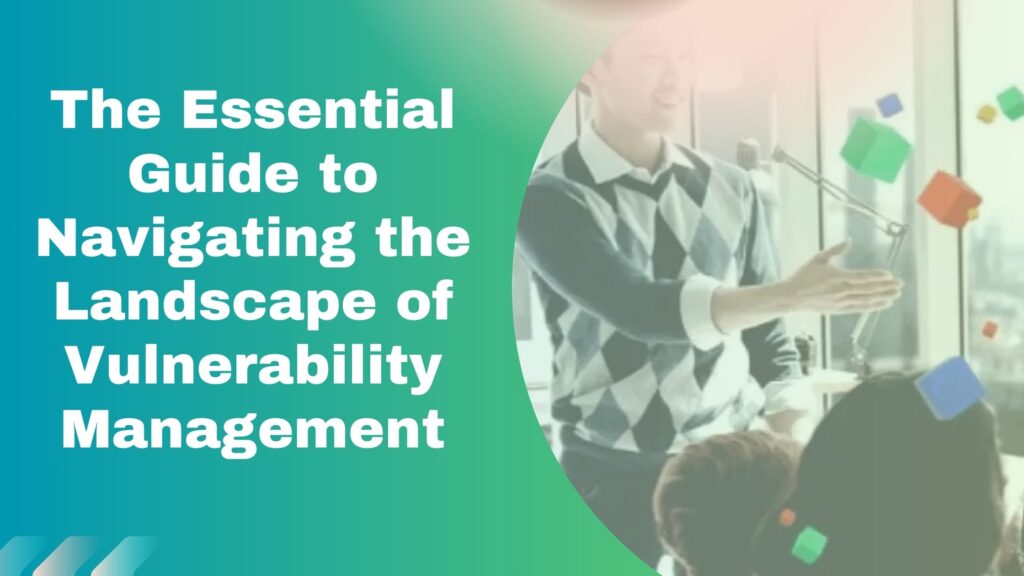Key Takeaways:
– Comprehensive understanding of vulnerability management and why it’s indispensable.
– Insight into prevalent misconceptions and stressing the ongoing necessity of security practices.
– Elucidation of assessing, categorizing, and responding to vulnerabilities with precision.
– Examination of the importance of education and human involvement in fortifying cybersecurity.
– Consideration of the impacts of regulatory compliance and a peep at the horizon of vulnerability management.
Table of Contents:
- The Importance of Vulnerability Management in Modern Cybersecurity
- Common Misconceptions About Vulnerability Management
- Identifying and Assessing Vulnerabilities
- Prioritizing Vulnerabilities: A Strategic Approach
- Remediation Tactics: From Patch Management to Configuration Changes
- The Human Element: Training and Awareness in Vulnerability Management
- Automating Vulnerability Management Processes
- Compliance and Regulatory Frameworks Influencing Vulnerability Management
- Assessing the Performance of Your Program for Vulnerability Management
- Future Trends in Vulnerability Management
The Importance of Vulnerability Management in Modern Cybersecurity
In a world where the digital landscape is continuously mutating, the vulnerability management process is not just a line of defense; it’s the groundwork for resilient cybersecurity. This critical strategy extends beyond mere identification: an intricate detection, assessment, and mitigation cycle evolves with the ever-changing threat spectrum. Businesses that stress its significance safeguard their resources and the larger digital ecosystem.
While most businesses recognize the necessity of implementing robust security measures, the comprehensive engagement that vulnerability management entails is often undervalued. The process is a structured approach that integrates into the core of organizational security protocols. It encompasses regular updates, software patching, hardware vulnerability assessments, and proactive threat hunting, designed to anticipate and respond to potential threats before adversaries can exploit them.

Common Misconceptions About Vulnerability Management
Addressing common misconceptions about vulnerability management begins with recognizing that it is not synonymous with occasional security audits. Unlike audits, vulnerability management is an enduring commitment to digital health. This process demands constant attention, as the security landscape never stands still. Threat actors are relentless, and vulnerability management is the marathon that defenders must run to stay ahead.
The notion that vulnerability management can be a set-it-and-forget-it process is dangerously misleading. It’s not just about deploying anti-virus software or firewalls and expecting them to work indefinitely. Instead, it should be viewed as a comprehensive strategy that filters through every aspect of an organization’s infrastructure, adapting as new weaknesses are discovered and new protective technologies emerge. Security is not a static state but a dynamic process that anticipates, evolves, and acts diligently.
Identifying and Assessing Vulnerabilities
The first critical step in vulnerability management is identifying vulnerabilities. This phase entails thoroughly examining all systems to uncover any security gaps that could be exploited. The complexity of this task has given rise to sophisticated vulnerability assessment tools and techniques, providing organizations with a robust armory for detection. However, this is not just a technical endeavor; it calls for a nuanced understanding of the organization’s specific context and how various vulnerabilities might intersect with potential threat vectors.
Prioritizing Vulnerabilities: A Strategic Approach
Post-identification, organizations are often faced with a daunting landscape of potential risks. Prioritizing vulnerabilities becomes an exercise in intelligent resource allocation, requiring teams to weigh the potential impact of each threat against the cost and feasibility of mitigation efforts. A strategic approach means considering not just the severity of the vulnerability but also environmental factors, such as the value of the affected asset and the current threat landscape. This deliberate and discerning process is akin to a triage system in emergency medicine: allocating attention where needed most to ensure organizational vitality.
Remediation Tactics: From Patch Management to Configuration Changes
Once prioritization is set, vulnerability remediation engages a range of tactics. Some fixes might be straightforward, such as deploying a software patch. Others could demand more intricate solutions like network reconfiguration or decommissioning outdated systems. While quick action is often necessary to protect vulnerable assets, executing these mitigation steps without introducing new issues or vulnerabilities is equally essential. Each action must be deliberate and scrutinized, ensuring one problem does not lead to another in the complex web of organizational IT infrastructure.
The Human Element: Training and Awareness in Vulnerability Management
The most meticulously crafted vulnerability management programs acknowledge that technology alone cannot remove all risks. Cybersecurity still requires humans as a critical component. Regular training, simulations, and awareness campaigns empower personnel to participate actively in the organization’s security posture. By cultivating a security-conscious culture, organizations can marshal an adept human firewall poised to recognize and respond to potential threats with savvy alertness.
Automating Vulnerability Management Processes
Automating aspects of the vulnerability management process becomes an attractive proposition in seeking efficiency and consistency. Automation can infuse systems with the capabilities to perform routine scans and evaluations and even initiate some preventative measures autonomously. However, as beneficial as these systems are, they are not a panacea. They supplement, rather than replace, the nuanced judgment calls and expertise that human security professionals contribute. The symbiosis of automated tools and human oversight is the hallmark of a well-oiled vulnerability management machine.
Compliance and Regulatory Frameworks Influencing Vulnerability Management
Understanding the role of compliance and regulatory frameworks is non-negotiable in vulnerability management. Specific industries navigate a thicket of statutory requirements that shape the boundaries and methodologies of their security efforts. Adherence to these guidelines, such as GDPR, HIPAA, or PCI-DSS, is not just about avoiding penalties; it’s a commitment to safeguarding stakeholders’ interests and upholding trust. These frameworks often set the minimum standards, and while some organizations might view compliance as burdensome, it serves as a critical baseline for more robust vulnerability management practices.
Assessing the Performance of Your Program for Vulnerability Management
Metrics serve as the compass guiding the vulnerability management program, offering clear indicators of success and areas needing improvement. Regularly reviewed, these metrics provide actionable insights and ensure the alignment of the security strategy with business objectives. Parameters such as the time to detect vulnerabilities, time to remediate, and the number of recurring vulnerabilities can illuminate the efficacy and responsiveness of the program. Establishing quantifiable targets and assessing them enables a culture of continuous enhancement that iterates the program towards excellence.
Future Trends in Vulnerability Management
Looking to the future, vulnerability management is poised to become even more integral as the digital tapestry becomes increasingly interwoven. The rise of IoT and ubiquitous connectivity across devices are the preamble to a more interconnected world. It is responsible for adapting security practices to meet the ever-expanding threat horizons. The progression toward continuous vulnerability management suggests a paradigm where security is not an afterthought but an embedded facet of every technology initiative. By anticipating trends and exploring innovative strategies, organizations are well-placed to manage vulnerabilities and transmute them into cornerstones of resilience and trustworthiness.
Contents
- 1 The Importance of Vulnerability Management in Modern Cybersecurity
- 2 Common Misconceptions About Vulnerability Management
- 3 Identifying and Assessing Vulnerabilities
- 4 Prioritizing Vulnerabilities: A Strategic Approach
- 5 Remediation Tactics: From Patch Management to Configuration Changes
- 6 The Human Element: Training and Awareness in Vulnerability Management
- 7 Automating Vulnerability Management Processes
- 8 Compliance and Regulatory Frameworks Influencing Vulnerability Management
- 9 Assessing the Performance of Your Program for Vulnerability Management
- 10 Future Trends in Vulnerability Management





